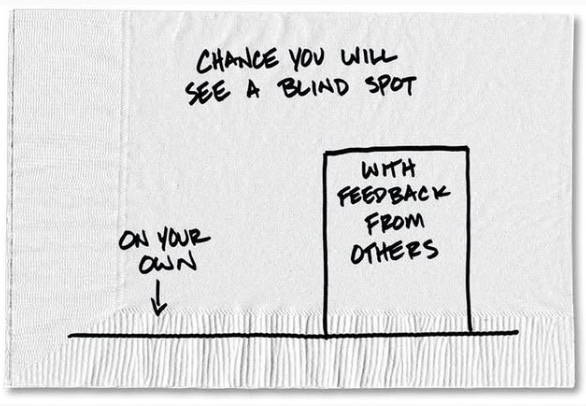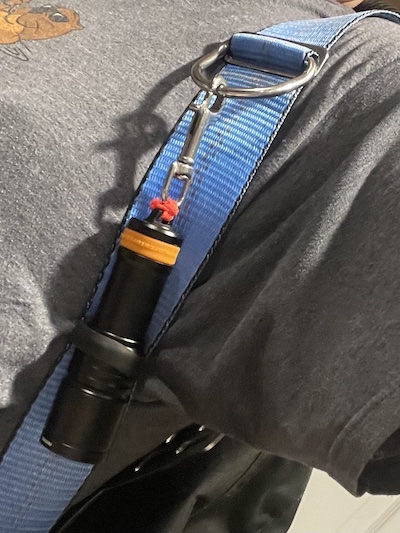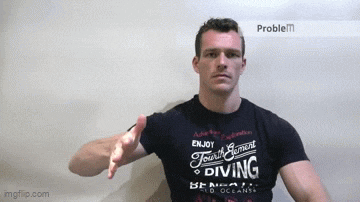

1. Always Dive with a Buddy
Do not misunderstand the concept of being self-sufficient with diving alone. Every diver needs to be self-sufficient or capable of diving alone. That does not mean they should. You can get a Solo Diver specialty and you will meet many individuals who dive solo...true solo. I refuse to do so. As a new diver I would not recommend it. As an experienced diver I would not recommend it.The reasons for this is that your buddy is there to help you. Not just with equipment failures, but with making decisions and being the double check we all need.

2. Anyone Can Call Any Dive For Any Reason
If you give the thumbs up to end the dive and ANYONE contradicts, criticizes or in any way admonishes or makes you feel bad then they are no longer a dive buddy. Full Stop. I've not run across this myself, but I'm sure there are jackasses in the industry somewhere. Macho or ego have no place under water.Nobody has the right to put you in physical or psychological danger. No one.

3. Plan Your Dive. Dive Your Plan.
If you don't hear this on your first day of classes then something has gone horribly wrong with your training. It is a standard saying within the scuba diving community. What does this mean? Generally speaking it means that your dive group has agreed on at least the following:- Where are we descending / entering / starting the dive?
- At what PSI are we ending the dive and beginning our ascent or return?
- What are we doing/seeing while we are under water?
4. Dive Within Your Training
Should you dive to 130ft on air on your 5th open water dive? No. Can you? Sure. It is a generally accepted risk analysis that you should dive to the depths and with the technology that you have been trained to/on. In my opinion, it is especially important in these specific situations:| Dive Type | Justification |
|---|---|
| Greater than 130ft on Air (EAN21) | Nobody should, but especially not without advanced / technical dive training |
| Using Nitrox | In theory no reputable dive shop will fill your tank with anything other than Air (EAN21) without you having the training. Just take the training so you learn about the risks. |
| Double Tanks with Manifold | The emergency steps you take when something goes wrong with air delivery are not at all like what you learned in Open Water class. Doubles is across the line into "technical" diving in my book. |
| Drysuit | At least have someone show you how to use both valves and keep it shallow for the first few dives |
| Full Penetration | Be that caves or shipwrecks...do not enter a "hard" overhead environment without training. |

5. Check Your Gear
Even if you rent gear, once it is in your hands it is YOUR gear. Do not trust anyone. Check everything. The very basic things you should check are:- Do the buckles on the BCD work properly?
- Do the pockets where you put your weights close securely?
- Do the hoses look to be in good shape?
- Does the O-Ring in the tank valve have any chips or cracks or bends in it?
- Do the second stage regulator mouth pieces look to be in good shape?
- Can you easily open/close the clamp/screw part of the Yoke or DIN part of the 1st stage?
- Do the inflate/deflate buttons work?
- Do the dump valves work?

6. Secure Loose Equipment
The use of pockets and D-Rings with BoltSnaps are your friend. EVERY piece of equipment, including your SPG and octo/safe second regulator, should be attached to you or your BCD in some fashion. Nothing should be dangling. If you have lights clipped off to a D-Ring, then use a piece of bungee or rubber loop to tuck it against your body.Things dangling not only put you in danger of being entangled in something they can also damage the aquatic life. Don't be a "Christmas Tree".

7. Mask On. Reg In.
Basically...when your mask is on then your regulator is in your mouth. Do not get into the habit of surfacing and immediately spitting out your regulator and taking off your mask. This may not be that big of a deal in a quarry, but can be deadly in the ocean due to waves/swell. If you want to say something; take the regulator out of your mouth, say something and then put it back in. The most dangerous part of the dive is when you are on the surface. Buoyancy issues, equipment failures, cramps, DCS/Bends, medical issues, any of a number of things can still go wrong and having your mask on and your regulator in your mouth make you resistent to drowning.8. Monitor Your Gas Supply
 There will be a lot of things going through your brain as you are diving, but do not forget that the only thing that really MUST occur is breathing. And what makes breathing useful is the gas supply you have with you. Try and make it a habit to check your SPG or your Dive Computer often. There is no such thing as checking too often.
There will be a lot of things going through your brain as you are diving, but do not forget that the only thing that really MUST occur is breathing. And what makes breathing useful is the gas supply you have with you. Try and make it a habit to check your SPG or your Dive Computer often. There is no such thing as checking too often.Do not count on your dive guide / divemaster or your dive buddy to check their gas supply and decide when to end the dive. Be self-reliant and dive the plan.

9. Equalize Early and Often
If your ears start to hurt you did not equalize early and often. Equalizing is free and should be done constantly as you descend. There are a half-dozen different ways to equalize your ears...use the one you are most familiar with.I recommend/prefer the Toynbee method of pinching the nose and swallowing. Followed closely by the Valsalva which is pinching the nose and blowing (softly).
Generally speaking, you'll do virtually all of your equalization on your descent. But don't ignore any pressure you feel during the dive. Equalize then as well!
There is no shame in having problems equalizing your ears. Just tell your buddy before you start descending that you might need a little more time than others.

